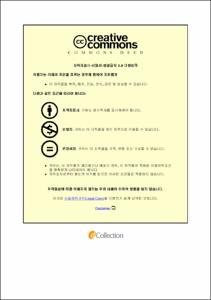Incoloy 825 합금의 고온소성변형과 기계적 성질에 관한 연구
- Abstract
- In this study, effects of the high temperature precipitation behavior and precipitate on the high temperature deformation stability were investigated by heat treatment and high temperature compression tests on incoloy 825 alloy.
The effects of mechanical properties and microstructural changes were investigated according to hot forging ratio and heat treatment temperature and aging time after hot forging.
The results obtained from this study were as follows : Cr23C6 carbide was precipitated under 950℃, but was not detected over 1,000℃. Most of the precipitate consist of Cr23C6 carbide. Strain-rate sensitivity was the highest in 0.01s-1 and the lowest in 10s-1. Strain-rate sensitivity was decreased sharply below 950℃. In the temperature between 850℃∼1,150℃, plastic instable area did not exist. It showed the lowest Ziegler Parameter value of 0.06. Ziegler Parameter was the lowest as 0.06 at 850℃ with 10s-1 of strain. The highest Ziegler Parameter value(0.43) was found in plastic deformation at 1,050℃ with 0.01s-1 of strain. It tends to have an higher resistance to the high temperature deformation under 950℃, due to the precipitate.
Hot forging was carried out at the forging ratio of 0%, 60% and 90% respectively in a range of 900℃∼1,140℃ and followed solution treatment was conducted at 1,000℃ for 1 hr. In all the specimens of hot forged of 0%, 60% and 90%, precipitates were not observed. The average grain size of 0% specimen is 82㎛ and that of 60% and 90% is 56㎛ and 31㎛, respectively. The range of grain size in the 0% specimen is uneven in 182㎛ to 31㎛, but the grain size of 90% specimen is uniform. With increasing hot forging ratio, the mechanical properties such as tensile strength, elongation, hardness increased and impact toughness increased by grain refinement.
With increasing solution treatment temperature, the grain size increased and the volume fraction of total precipitates decreased, and the precipitates disappeared at 1,000℃. With increasing aging time at 700℃, the volume fraction of precipitate increased and the precipitates size increased. Most of the precipitates consist Cr23C6 carbide, and a small amount of TiC carbide was also observed. With decreasing solution treatment temperature and increasing aging time, tensile strength and hardness increased, and the elongation and impact value decreased. With increasing aging time, the impact value decreased sharply by the increased of the precipitate size.
- Issued Date
- 2018
- Awarded Date
- 2018. 8
- Type
- Dissertation
- Publisher
- 부경대학교
- Affiliation
- 부경대학교 대학원
- Department
- 대학원 금속공학과
- Advisor
- 강창룡
- Table Of Contents
- Abstract iv
제Ⅰ장 서론 1
제 Ⅱ 장 이론적 배경 6
2.1 초내열 합금의 개발 과정 및 분류 7
2.1.1 초내열 합금의 개발 과정 7
2.1.2 초내열 합금의 분류 9
2.2 Ni-Fe기 초내열 합금의 특징 및 제조 방법 19
2.2.1 Ni-Fe기 초내열 합금의 특징 19
2.2.2 Ni-Fe기 초내열 합금의 제조 방법 20
2.3 초내열합금의 합금 원소 23
2.4 초내열합금의 주요 상 30
2.5 재결정 39
2.5.1 동적 재결정 39
2.5.2 정적 재결정 40
2.6 동적 모델링 42
2.7 결정립 미세화 46
제 Ⅲ 장 Incoloy 825 합금의 고온 변형 안정성에 미치는 미세조직의 영향 47
3.1 서 론 48
3.2 실험방법 50
3.2.1 시료 50
3.2.2 열처리 50
3.2.3 미세조직 관찰 50
3.2.4 X선 회절시험 51
3.2.5 고온 압축시험 51
3.3 실험결과 및 고찰 52
3.3.1 미세조직 관찰 52
3.3.2 고온에서 석출되는 석출물 분석 52
3.3.3 고온 변형 안정성 평가 59
3.4 결 론 65
제 Ⅳ 장 Incoloy 825 합금의 기계적 성질에 미치는 열간 단조비의 영향 67
4.1 서 론 68
4.2 실험방법 70
4.2.1 시료 70
4.2.2 단조 및 열처리 70
4.2.3 미세조직 관찰 71
4.2.4 결정립 크기 측정 71
4.2.5 기계적 성질 시험 71
4.3 실험결과 및 고찰 72
4.3.1 단조비에 따른 미세조직 72
4.3.2 기계적 성질에 미치는 열간 단조비의 영향 73
4.3.3 기계적 성질에 미치는 결정립 크기의 영향 74
4.4 결 론 83
제 Ⅴ 장 Incoloy 825 합금의 기계적 성질에 미치는 열처리의 영향 84
5.1 서 론 85
5.2 실험방법 87
5.2.1 시료 87
5.2.2 단조 및 열처리 87
5.2.3 미세조직 관찰 88
5.2.4 석출물 분석 88
5.2.5 기계적 성질 시험 88
5.3 실험결과 및 고찰 90
5.3.1 미세조직 90
5.3.2 기계적 성질 93
5.4 결 론 105
제 Ⅵ 장 결 론 106
참고문헌 109
- Degree
- Master
- Files in This Item:
-
-
Download
 Incoloy 825 합금의 고온소성변형과 기계적 성질에 관한 연구.pdf
기타 데이터 / 10.8 MB / Adobe PDF
Incoloy 825 합금의 고온소성변형과 기계적 성질에 관한 연구.pdf
기타 데이터 / 10.8 MB / Adobe PDF
-
Items in Repository are protected by copyright, with all rights reserved, unless otherwise indicated.